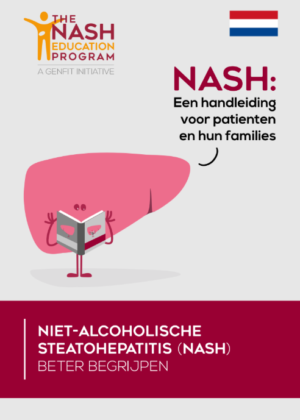Hepatic steatosis, non-alcoholic
Symptoms and causes
Symptoms and causesWhat is it?
Non-alcoholic fatty liver disease (NAFLD) is a disease which involves a build-up of fat in the liver.
Only 30% of patients who have NAFLD suffer from NASH (non-alcoholic steatohepatitis), which causes inflammation and scars in the liver. These two disorders can sometimes develop into cirrhosis (20-25% of cases). An as yet unknown percentage may also develop liver cancer .
Causes
Insulin resistance, genetic factors and being overweight can contribute to the development of a fatty liver.
NASH is a common disease, especially in obese individuals. Of our population, 10-25% of individuals is affected and 50-90% of them are obese individuals. This sickness is also associated with diabetes, with 9-12% of patients with NASH having diabetes. Another common disorder is a cholesterol or fat increase in the blood, which is about 20 - 40%. Increased abdominal fat (abdominal obesity) is particularly important. We speak of abdominal obesity when the abdominal circumference exceeds 94 cm for men and 80 cm for women.
Diagnosis and treatment
Diagnosis and treatmentTesting and diagnosis
Often, a fatty liver is discovered by accident while taking an ultrasound for other reasons. Sometimes, the diagnosis can also be made with a blood test. Liver tests are sometimes distorted. During a blood test, the iron (ferritin) may also be increased as a result of a liver inflammation.
In case of doubt, the diagnosis can be made with a liver biopsy. This examination consists of a small part of the liver being examined to see if there is any damage. Not every patient with a fatty liver has to undergo this biopsy.
Treatment
Improving eating habits and increasing exercise will lead to a decrease in body weight that may reduce the liver fat. These have also been shown to improve liver inflammation and liver damage. Furthermore, they are important for reducing the risk of cardiovascular disease and diabetes. Weight reduction and better eating habits are therefore extremely important for the treatment of a fatty liver.
Clinical studies
Currently, we have also medications from clinical trials available at our centre.
Leaflet
LeafletOnly available in Dutch:

Niet-alcoholische steatohepatitis (NASH): een handleiding voor patiënten en hun families
DownloadTreatment centres and specialisations
Treatment centres and specialisations
Latest publication date: 15/05/2024
Supervising author: Dr Monsaert Els



